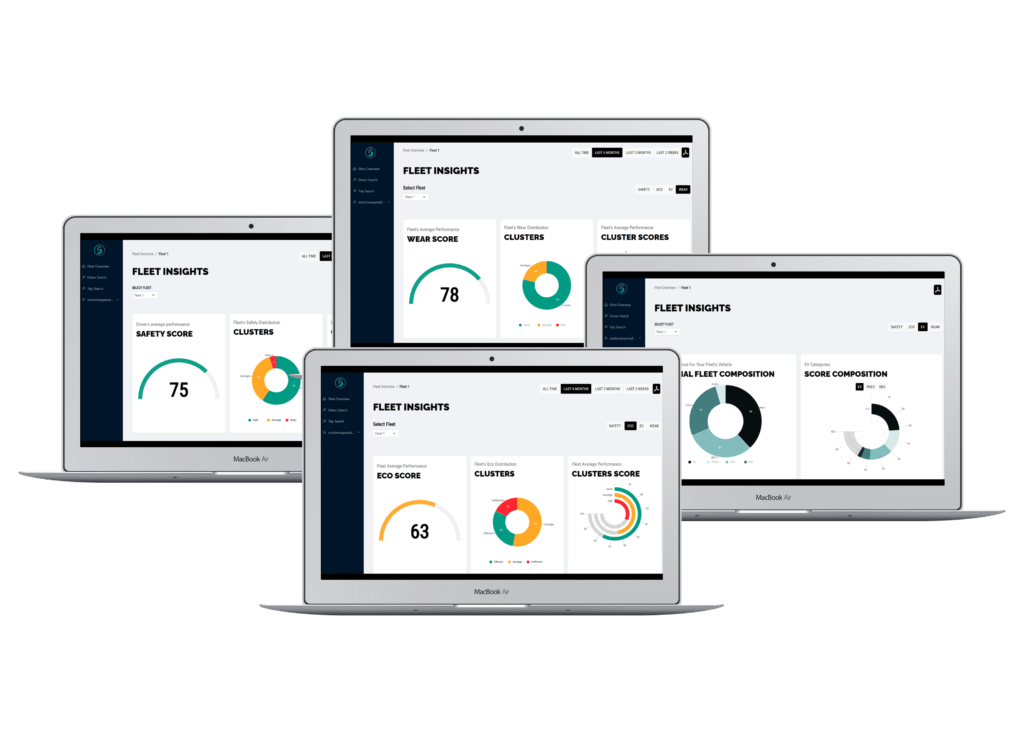The classical vs. new ways of informing fleet decisions
Fleet managers tend to deal with overwhelming amounts of data every day. They track metrics ranging from fleet asset utilization and fuel economy through the cost of ownership and performance, ending at driver assignments and coaching. Drawing actionable insights from the staggering volume of data determines the success of their fleets. However, obtaining an accurate and up-to-date picture of the fleet out of the constant streams of data generated each second is a formidable task.
To succeed, managers should discard the traditional spreadsheet-based fleet management methods and replace them with more efficient solutions, such as cloud-based, data-driven software that provides insights for fleet optimization based on data that is always accurate, current, and actionable.
So, to illustrate the benefits of the transition from legacy, spreadsheet-based fleet management into the new era of intelligent cloud solutions, let’s review three major areas of fleet optimization and learn how they used to be managed in the past.
Vehicle tracking
Vehicle tracking systems collect data about vehicle locations, typically from a box mounted inside the car. When these solutions first emerged, their chief purpose was to enable locating the vehicle on the map. This way, it was possible, for example, to identify a stolen car’s whereabouts or check if a car had reached its destination.
Today’s vehicle tracking solutions are much more evolved and accurate. Instead of serving one primary goal, they provide data to monitor, route, and dispatch fleets, onboard information, and ensure security. And thanks to a significant upgrade in connectivity in the last decade, cars and drivers can be managed efficiently while en route, not only at rest.
Additionally, geofencing often enhances modern tracking systems to alert managers if a vehicle goes outside a designated area. And advanced fleet telematics, third-party system integrations, and voice or gesture-guided communications are more recent additions to vehicle tracking platforms. Together, they provide fleets with the sophisticated ability to enhance driver safety and driving style, extend car longevity, decrease CO2 emissions, and lower fuel and energy consumption.
Route planning and optimization
A fleet planner or manager works with hundreds of variables and constraints each day to develop the most efficient routes. But even though route optimization plays a strategic role in fleet management, manual route planning is still commonplace.
If we also consider the changing customer expectations, shorter delivery windows, and rising operational costs, traditional route planning strategies fail to deliver. For example, documenting and developing routes in spreadsheets impede real-time tracking of the delivery fleet. Additionally, the lack of immediate visibility into each fragment of the fleet negatively impacts the accuracy of ETAs for deliveries and increases the risks of fleets running empty miles.
Fortunately, modern, software-based route optimizers resolve the challenges created by spreadsheet-based operations. These powerful logistics tools apply Artificial Intelligence technology to determine the shortest and most efficient routes. They are essential, among others, for vehicle allocation, historical data interpretation, cost-wise route optimization, or minimizing empty miles.
Integrated with AI-driven telematics solutions, modern route planners improve productivity and increase compliance with the service-level agreement (SLA). They also enable fleet managers to handle on-demand orders and reroute on the go to cater to delivery changes initiated by a customer. Considering the steady expansion of delivery fleets and strengthening competition, the ability to dynamically respond to market trends and challenges can be a winning strategy for many first and last-mile delivery companies.









